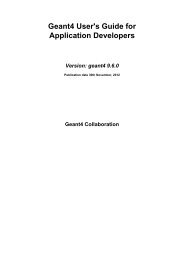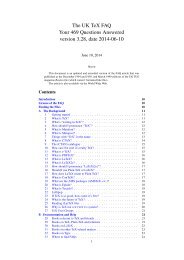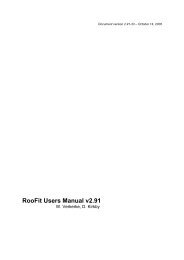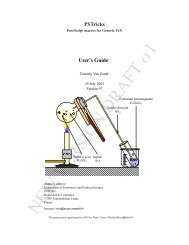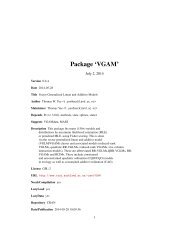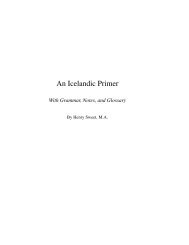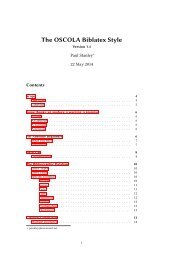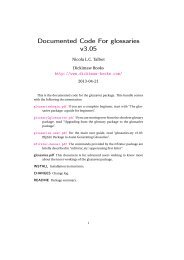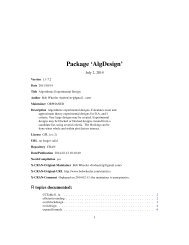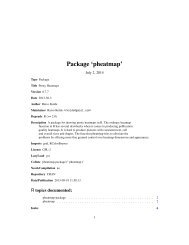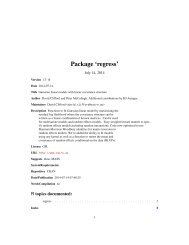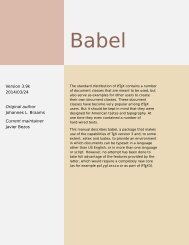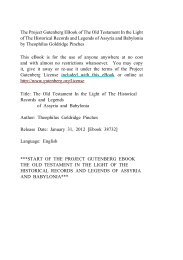The microtype package
The microtype package
The microtype package
You also want an ePaper? Increase the reach of your titles
YUMPU automatically turns print PDFs into web optimized ePapers that Google loves.
MICRO FINE TUNING: Character protrusion 13<strong>The</strong> protrusion settings consist of 〈character〉 = 〈protrusion factors〉 pairs.<strong>The</strong> characters may be specified either as a single character (A), as a textsymbol command (\textquoteleft), or as a slot number (resp. Unicode numberfor LuaTEX or TEX): three or more digits for decimal notation, prefixed with " forhexadecimal, with ’ for octal (e.g., the ‘fl’ ligature in T1 encoding: 029, "1D, ’35).8-bit (and even UTF-8) characters may be entered directly or in L A TEX’s traditional7-bit notation: both \"A and Ä are valid, provided the character is actually declaredin both the input and the font encoding. With LuaTEX or TEX, you may additionallyspecify a (font-specific) glyph name, prefixed with ‘/’ (e.g., the ‘fl’ ligature as /f _ l).Note that you also have the possibility to declare lists of characters that shouldinherit settings (see section 5.6).<strong>The</strong> protrusion factors designate the amount that a character should be protrudedinto the left margin (first value) respectively into the right margin (secondvalue). By default, the values are relative to the character widths, so that a value of1000 means that the character should be shifted fully into the margin, while, forexample, with a value of 50 it would be protruded by 5% of its width. Negativevalues are admitted, as well as numbers larger than 1000 (but effectively not morethan 1em of the font). You can omit either number if the character should not beprotruded on that side, but must not drop the separating comma.Options:EXname You may assign a name to the protrusion settings, so that you are able toload it by another list.load You can load another list (provided, you previously assigned a name to it)before the current list will be loaded, so that the fonts will inherit the values fromthe loaded list.Thus, the configuration may be simplified considerably. You can for instance createa default list for a font; settings for other shapes or series can then load thesesettings, and extend or overwrite them (since the value that comes last will takeprecedence). Font settings will be loaded recursively. <strong>The</strong> following options willaffect all loaded lists, in other words, any options from the loaded lists will beignored:factor This option can be used to influence all protrusion factors of the list,overriding any global factor setting (see section 3.2). For instance, if you wantfonts in larger sizes to be protruded less, you could load the normal lists, just witha different factor applied to them:\SetProtrusion[ factor = 700,load = cmr-T1 ]{ encoding = T1,family = cmr,size = large- }{ }unit By default, the protrusion factors are relative to the respective character’swidth. <strong>The</strong> unit option may be used to override this and make <strong>microtype</strong> regardall values in the list as thousandths of the specified width. Issuing, for instance,‘unit=1em’ would have the effect that a value of, say, 50 now results in the characterEX



